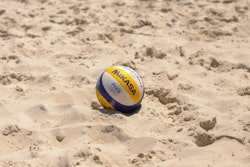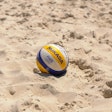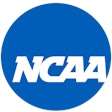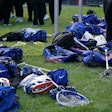An annual federal report shows head coaches of men’s sports at Dartmouth College earned more than those of women’s sports last year, according to a Valley News article.
The federal report, which requires colleges and universities to make public gender equity information about their athletic programs, showed men’s team coaches were paid on average nearly $40,000 more.
The average annual salary for the head coaches of Dartmouth’s 14 men’s sports was $133,033 in the reporting year ending June 30, 2020. Head coaches of Dartmouth's 17 women’s teams made an average of $93,609. The numbers are based on dollars per full-time equivalent as reported by Dartmouth.
Dartmouth’s assistant coaches for women’s teams were also paid much less than their counterparts on men’s teams, the report showed. On average, men’s assistant coaches were paid $68,906 compared to $49,293 for women’s assistant coaches.
According to Valley News, interim athletic director Peter Roby said in a recent interview that the salary disparities are a focal point of a gender equity review of the college's athletic department now underway.
“We need to see where things have to be changed and where we need to be more thoughtful about compensation,” said Roby, a 1979 Dartmouth graduate who played on the school’s basketball team and later coached at Harvard University before becoming athletic director at Northeastern University. “I want to make sure we’re closing those gaps where we can and where the budget will allow.”
The salary disparities found at Dartmouth are not unusual for the Ivy League, Valley News reported according to numbers from 2019. At Harvard, head coaches of men’s teams similarly earned nearly $40,000 more than those of women’s teams.
The widest gap in the Ivy League was at Columbia, where the difference stood at $81,941 in 2019-20.
But Dartmouth’s athletics department has faced serious scrutiny since the college announced last July that it planned to immediately eliminate five varsity programs — men’s lightweight crew, men’s and women’s golf, and men’s and women’s swimming and diving — to save money and also reduce the number of spots allotted to athletics in incoming classes.





































